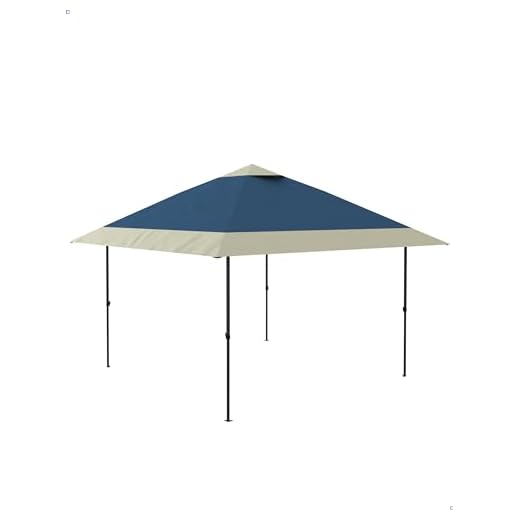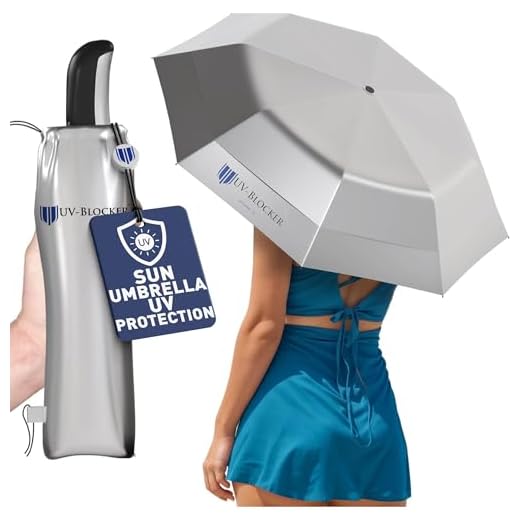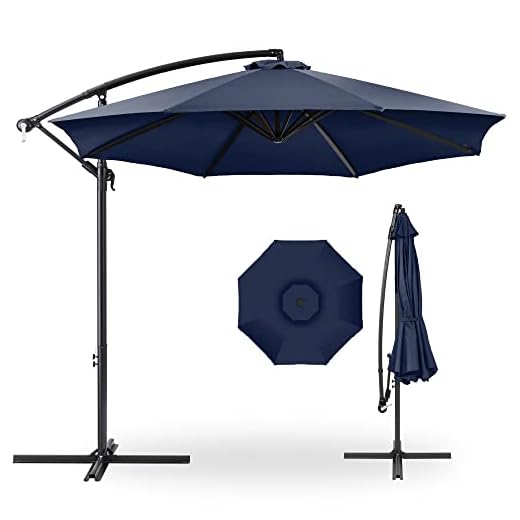



For those seeking relief from the sun’s rays while enjoying their outdoor area, selecting the right canopy can make all the difference. This article provides insights into various options available on the market, catering to diverse preferences and needs. Whether you have a small patio or a spacious garden, you’ll find valuable recommendations tailored to your situation.
This guide will be helpful for homeowners looking to enhance their outdoor experience, as well as for event planners in need of temporary solutions. We’ll cover aspects such as size, material durability, ease of setup, and design aesthetics to ensure you make an informed decision.
In summary, you will discover a range of products that effectively provide coverage from the sun, along with tips on maintenance and positioning. With the right choice, you can create a comfortable and inviting outdoor environment for relaxation or entertaining guests.
Choosing the Ideal Outdoor Canopy
For anyone seeking a reliable solution to combat sunlight during outdoor activities, selecting the right canopy is paramount. The ideal structure not only provides ample coverage but also enhances the overall aesthetic of the space. Prioritize durability and ease of use for maximum enjoyment.
Consider factors like material, size, and design when making your selection. A well-constructed canopy will stand up to various weather conditions, ensuring longevity and consistent performance. Look for options that offer adjustable heights or tilting mechanisms for versatile positioning.
Key Features to Evaluate
- Material Quality: Look for canopies made from UV-resistant fabrics that prevent fading and protect against harmful rays.
- Frame Stability: A sturdy structure made from aluminum or steel ensures resilience against wind and other elements.
- Size and Coverage: Measure your outdoor area to choose a size that offers sufficient shade for your intended activities.
- Portability: If mobility is important, consider lightweight options that are easy to set up and transport.
In addition, color and design should complement your outdoor setting. Neutral tones typically blend well, while vibrant hues can add a pop of personality. Always check for user reviews and ratings to gauge performance and satisfaction from other consumers.
| Feature | Importance |
|---|---|
| UV Protection | Prevents skin damage and fabric fading |
| Weather Resistance | Ensures functionality during various weather conditions |
| Ease of Setup | Enhances user experience and encourages frequent use |
| Design Versatility | Adapts to different settings and occasions |
Ultimately, investing time in research will yield a product that meets both functional needs and aesthetic desires, creating an inviting outdoor space for relaxation and enjoyment.
Choosing the Right Size for Your Outdoor Space
Selecting the appropriate dimensions for your outdoor covering is vital for maximizing comfort and functionality. The size should complement the area without overwhelming it, ensuring a harmonious balance between style and utility.
To determine the ideal size, begin by measuring the designated area. Consider the layout and how the structure will interact with existing furniture and pathways. A well-measured canopy can create a cozy nook or a spacious gathering spot, depending on your needs.
Key Factors to Consider
- Space Availability: Ensure there is enough room around the covering for movement and access. Aim for at least 2-3 feet of clearance around the edges.
- Purpose: Identify the main use. For dining or lounging, a larger coverage may be preferable, while a smaller option might suffice for a reading nook.
- Sun Exposure: Assess the path of the sun throughout the day. Measure the area to ensure adequate coverage during peak hours.
- Wind Resistance: Larger canopies may be more susceptible to wind. Consider how size affects stability and choose a design that can withstand local weather conditions.
For a more precise fit, refer to a sizing guide that can help you visualize coverage based on your measurements and intended use. A well-sized outdoor covering enhances your outdoor experience, providing comfort and style tailored to your unique space.
Materials for Durability and UV Protection
Choosing the right materials is essential for ensuring longevity and effective UV protection in outdoor canopies. Fabrics such as polyester and acrylic are commonly preferred for their resilience against fading and wear over time.
Polyester is known for its strength and resistance to stretching and shrinking, making it an excellent option for outdoor use. It often comes with a UV protective coating, which filters harmful rays while maintaining vibrant colors. Acrylic fabrics, on the other hand, are inherently more UV resistant and provide superior color retention, offering an attractive and durable choice for sun protection.
Additional Material Considerations
- Canvas: Offers excellent durability and is often treated for water resistance, making it suitable for various weather conditions.
- Aluminum: Lightweight and rust-resistant, aluminum frames provide stability and longevity, particularly in coastal areas.
- Fiberglass: Known for its flexibility and strength, fiberglass ribs can withstand strong winds without breaking.
For optimal performance, look for double-stitched seams and reinforced corners, which enhance the structural integrity of the fabric. This attention to detail ensures that your outdoor cover can withstand the elements effectively.
Checking for a warranty can also provide insight into the material quality and manufacturer confidence in their products, giving you peace of mind with your investment.
Understanding Different Canopy Styles and Mechanisms
Choosing the right type of canopy involves understanding various styles and their mechanisms. The most common designs include market canopies, cantilevered models, and pop-up variations, each serving distinct purposes. Market canopies typically feature a central pole and are ideal for providing shade over tables and seating areas, while cantilevered options offer greater flexibility with side-mounted supports that allow for unobstructed space underneath.
Pop-up canopies are portable and easy to set up, making them suitable for events or temporary use. They often come with an automatic mechanism for quick deployment, which is convenient for users who need instant coverage. However, these models may not provide the same durability or wind resistance as more permanent structures.
Mechanisms of Operation
Canopies operate through a variety of mechanisms, affecting ease of use and stability. Here are some common types:
- Crank Lift: This mechanism allows for smooth raising and lowering of the canopy using a hand crank. It is user-friendly and ideal for larger models.
- Push Button: Often found in pop-up designs, this mechanism enables quick setup and takedown with a simple push of a button.
- Pulley System: This more traditional design utilizes ropes and pulleys for adjusting height, offering a classic aesthetic but requiring more effort to operate.
When selecting a canopy, consider both the style and the mechanism that best fit your needs. The right combination will enhance comfort and functionality, ensuring a pleasant experience in your outdoor space.
Essential Features for Wind Resistance and Stability
Choosing a reliable cover for outdoor spaces requires careful consideration of its ability to withstand wind and maintain stability. The design and materials play a significant role in ensuring that the structure remains functional and safe in breezy conditions.
One of the key aspects to assess is the frame construction. Materials such as aluminum or steel provide durability, while a thicker gauge can enhance resistance against strong gusts. Additionally, a weighted base is critical; it keeps the cover anchored and prevents it from tipping over. Look for a base that can be filled with sand or water to add extra weight when needed.
Key Design Features
Several design elements contribute to wind resistance:
- Ventilation: Canopies with built-in vents allow wind to flow through, reducing pressure and the risk of damage.
- Canopy Shape: A rounded or domed top can deflect wind better than flat designs, minimizing the chances of uplift.
- Rib Structure: Sturdy ribs that are reinforced can handle more stress, preventing bending or breakage during windy conditions.
- Adjustable Height: Features that allow for height adjustment can help lower the structure closer to the ground during storms.
When planning for stability, opt for units that can be secured to the ground or have anchoring options. This is particularly important in areas prone to strong winds. By selecting a model with these characteristics, outdoor relaxation can be enjoyed safely, regardless of the weather conditions.
Popular Brands and Models to Consider
When selecting a suitable canopy to provide relief from the sun, several brands stand out for their quality and innovation. These manufacturers have established a reputation for durability, ease of use, and stylish designs. Their products cater to various preferences, ensuring that there is something for everyone, whether you seek a classic look or a more contemporary aesthetic.
Among the noteworthy brands, certain models are recognized for their durability and functionality. They often feature materials that resist fading and wear, while also providing a range of colors and sizes to fit diverse outdoor spaces. Additionally, many options come equipped with adjustable mechanisms, allowing users to easily modify the position to maximize coverage throughout the day.
Key Features to Evaluate
- Material: Look for high-quality fabrics that offer UV protection and are water-resistant.
- Frame Construction: Consider aluminum or fiberglass frames for lightweight yet sturdy support.
- Ease of Use: Mechanisms for opening and closing should be simple and intuitive.
- Portability: Weigh the convenience of transport and storage, especially for larger models.
- Design: Choose a style that complements your outdoor décor while meeting functional needs.
A variety of retailers provide these canopies, each with unique offerings tailored to different customer needs. Exploring customer reviews can further guide the decision-making process, as firsthand experiences often highlight the strengths and potential drawbacks of specific products.
In conclusion, investing in a reliable canopy can enhance outdoor experiences, allowing for enjoyable moments without the discomfort of direct sunlight. By considering the features and exploring well-regarded brands, selecting the right option becomes a straightforward task.
Maintenance Tips to Extend the Life of Your Canopy
Regular cleaning is fundamental. Use a mild soap solution and a soft brush to remove dirt and debris from the fabric. Rinse thoroughly to prevent soap residue, which can deteriorate the material over time.
Protective measures are essential for longevity. Always secure your structure when not in use. Store it in a dry place during harsh weather conditions to prevent damage from winds, rain, or snow.
Key Maintenance Practices
- Inspect Regularly: Check for wear and tear, including frayed edges or broken ribs. Address any issues promptly to avoid further damage.
- Use a Cover: Invest in a protective cover for additional shielding against UV rays and environmental factors.
- Keep It Dry: Ensure the fabric is completely dry before folding it up to prevent mold and mildew.
- Avoid Heavy Loads: Refrain from placing heavy items on top, as this can cause structural damage.
By implementing these strategies, you can significantly prolong the lifespan of your outdoor canopy, ensuring it remains a reliable source of comfort for years to come.
Best backyard shade umbrella
Features
| Part Number | CS-C1010WH |
| Model | CS-C1010WH |
| Warranty | 2 year manufacturer |
| Color | Grid White |
| Size | 10x10 |
Features
| Part Number | MEUWS1B-UWSRY |
| Model | MEUWS1B-UWSRY |
| Color | Royal Blue |
| Size | 5FT Wide |
Features
| Part Number | 4336583223 |
| Model | 4336583223 |
| Color | TAN |
| Size | 9 FT |
Features
| Part Number | No sidewall-canopy-0 |
| Model | No sidewall |
| Color | Blue |
Features
| Part Number | GVZZ10FTNavy-new |
| Model | GVZZ10FTNavy-new |
| Color | Navy Blue |
| Size | 10FT |
Features
| Part Number | 1 |
| Color | Tan |
| Size | 10ft LED |
Features
| Part Number | FBA_741360281158 |
| Model | FBA_741360281158 |
| Color | Reflective Silver |
| Size | 44" |
Features
| Part Number | SKY5686 |
| Model | SKY5686 |
| Color | Navy Blue |
| Size | 10ft |
Video:
FAQ:
What should I consider when choosing the best shade umbrella for my backyard?
When selecting a shade umbrella, there are several factors to keep in mind. First, assess the size of your outdoor space and determine how much shade you need. Umbrellas come in various diameters, so choose one that can adequately cover your seating or dining area. Next, think about the material; a good canopy should be made from UV-resistant fabric to protect against sun damage. Additionally, consider the frame’s durability; materials like aluminum or steel offer sturdiness. Finally, check the umbrella’s mechanism for opening and closing; a user-friendly design can enhance your experience.
How do I maintain my backyard shade umbrella to ensure its longevity?
Maintaining your shade umbrella is crucial for extending its lifespan. Start by regularly cleaning the canopy fabric with mild soap and water to remove dirt and stains. Make sure to let it dry completely before folding it to prevent mildew. During harsh weather conditions, such as strong winds or heavy rain, it’s wise to close the umbrella to avoid damage. If your umbrella has a tilt feature, use it to adjust the angle as the sun moves, which can help in maximizing shade. Finally, consider using a protective cover when the umbrella is not in use, especially during the off-season, to shield it from the elements.











